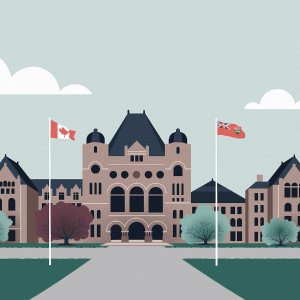For Aboriginal law practitioners in Ontario, navigating the fiscal landscape for First Nations clients often begins and ends with section 87 of the Indian Act, R.S.C., 1985, c. I-5. While crucial, its exemptions are limited and focused more on reserve. The real story of modern First Nations governance, however, is being written through the exercise of inherent tax authority. This shift from tax exemption to tax jurisdiction is a powerful tool for self-determination, and lawyers must be equipped to guide their clients through the evolving frameworks available.
The Limitations of Section 83
The traditional starting point, s. 83 of the Indian Act, grants bands limited power to levy taxes for local services. However, this highly paternalistic framework, requiring extensive ministerial oversight, makes it an unattractive and rarely used option. As one expert noted, it’s been a very long time since a First Nation opted to start taxation through this outdated system. The future lies in more substantial, modern agreements.
More Substantial Tax Authority Models
The most common entry points into tax authority for First Nations are through delegated arrangements with the federal government.
The First Nations Goods and Services Tax (the “FNGST”)
Under this fully harmonized regime, a First Nation enters an agreement with Canada, and the CRA administers the tax seamlessly. The revenue is formula-driven, and 100% transferred to the First Nation at negligible cost. The downside? It’s largely "window dressing." The First Nation has no discretion over the tax base, rebates or rates, limiting its utility for strategic economic planning.
Specific Excise Taxes
Similar to the FNGST, First Nations can enact taxes on fuel, tobacco, and alcohol, administered by the CRA. These can sometimes generate better revenue than FNGST but specific exercise taxes share the same limitation: no ability to expand the tax base or tailor it to local priorities.
First Nations Income Tax
Though not yet prevalent in Ontario, self-governing First Nations can enact a harmonized income tax regime. Again, administered by the CRA, it doesn’t change the amount of tax paid but directs the revenue to the First Nation. This is a significant tool, but it’s currently limited to those with comprehensive land and governance arrangements.
The Game Changer: Property Tax and the First Nations Fiscal Management Act (the “FMA”)
If the delegated models are about revenue collection, the FMA regime is about sovereign revenue generation and self-governance. This is where lawyers working with First Nations will find the most dynamic opportunities.
The FMA provides a comprehensive legislative framework that allows First Nations to move beyond the Indian Act. As of 2024, half of all First Nations in Canada have property tax jurisdiction, with many opting into the FMA. In Ontario, while the numbers are currently lower (only four using the FMA), the trend is clear.
Why is property tax under the FMA so transformative?
Planning and Governance Power. Unlike the FNGST, property tax gives a First Nation direct control over its development destiny. They can decide what to tax, at what rate, and how to spend the revenues. This funds critical services, from fire protection to road maintenance, without being subject to a federal claw back.
- Stable, Long-Term Financing. The FMA isn't just a tax law. It creates institutions that pool resources and provide long-term, stable financing for major infrastructure projects. A new infrastructure institution, slated to become operational in 2026, will further enhance this capability.
- Comprehensive Support. The success of the FMA is attributed to its robust support system. The First Nations Tax Commission establishes standards, and funding is available for legal costs and dispute resolution, creating a practical pathway for implementation.
Case in Point: Georgina Island
The journey from legal framework to practical success is exemplified by the Chippewas of Georgina Island, an Anishinaabe Nation located on the southern shores of Lake Simcoe. Since enacting their Property Tax Law in 2017 under the FMA, they have implemented a budget-based tax system with a four-year transition period, achieved a 100% tax collection rate by the second year, funded essential services like fire response, environmental protection, and road maintenance; and established their own independent Assessment Appeal Board, separate from the provincial system.
With a total assessed value of $120 million and planned expenditures of $1.1 million for 2025, Georgina Island demonstrates how tax authority translates directly into tangible self-governance and community services.
For lawyers, this dynamic system presents key opportunities to help their First Nations clients navigate these complex frameworks, assist with drafting and implementing their own laws, and resolve any jurisdictional disputes that may arise. What this means practically is that lawyers can: advise their clients on the pros and cons of the FNGST versus the more robust FMA regime, work with First Nations to draft their own tax laws and development cost charge bylaws under the FMA, and prepare their clients to defend this tax jurisdiction. For example, the successful judicial review of Scugog Island’s fee law underscores the importance of legally sound enactments and the need to be ready to uphold First Nations tax authority.
The landscape of First Nations taxation in Ontario has moved far beyond the limited exemptions of the Indian Act. While section 87 remains a tool, the path to true fiscal self-sufficiency is through the exercise of inherent tax jurisdiction. By understanding the practicalities of the FNGST, the transformative potential of the FMA, and the real-world success of communities like Georgina Island, lawyers working with First Nations can provide strategic advice that truly supports their clients' self-governance aspirations. This is not just about collecting revenue. Rather, it’s about building nations.
Curious about how the FMA is reshaping the legal practice? Consider registering for this CPD webcast, First Nations’ Taxing Authority: What Lawyers Advising First Nations Need to Know.
Any article or other information or content expressed or made available in this Section is that of the respective author(s) and not of the OBA.










